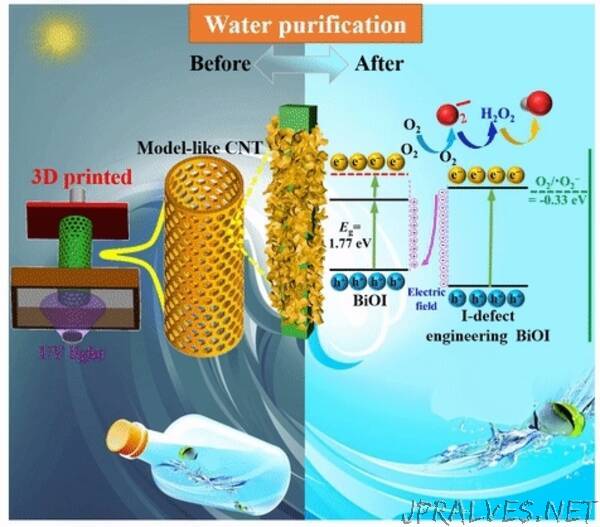
“A research team led by Prof. ZHANG Dun from the Institute of Oceanology of the Chinese Academy of Sciences (IOCAS) has developed a novel in-situ growing bismuth oxyiodide (BiOI) film on 3D-printed polymer substrate through successive ion layer adsorption reaction (SILAR) for water purification.
The study was published in Separation and Purification Technology on May 4.
The researchers found that the substrate was completely covered with floriform microstructure film. They introduced OH-/I substitution strategy to fabricate I-defects engineering BiOI film. The superficial color of the 3D-printed substrates ordinally changed from gloss white to brownish yellow, dark yellow, and light yellow, which was ascribed to the change of band gap caused by iodine defect engineering film.
During the growing process of films, iodine spaces were introduced into the BiOI crystals, increasing BiOI internal electric field and electron density and improving photoinduced carrier separation and transmission efficiency. Iodine defects engineering BiOI exhibited smaller grain size, higher specific surface area, electronegativity, photoelectric response and photocatalytic activity than stoichiometry BiOI.
The researchers proposed that Bi3+ firstly adsorbed on polymers to construct the active grown sites of the film. With the extension of time, the films gradually self-assembled into petal-like BiOI film. High proportion and movement speed of I- promoted the in-situ growth of BiOI film along the crystal plane.
“The film exhibits good photocatalytic activity and cyclic stability on photodegrading organic compounds and sterilizing microorganism,” said XU Xuelei, first author of the study.”
